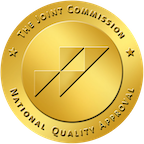Skip To Rehab Listing
That is one of the reasons the North Olmsted area has 25 alcohol and drug rehab centers available to local residents who struggle with drug and/or alcohol addiction. These programs aid the region's population of 34,081 regardless of age or situations in order to make effective rehab available to anyone who needs it.
Alcohol and Drug Rehab Service Settings and Methods
North Olmsted area residents who face drug and alcohol addiction problems can choose from a variety of recovery settings based upon factors such as their location and individual needs.
Treatment settings may consist of the following: long term rehabs, detox centers, intensive outpatient treatment, short term drug rehab centers, inpatient rehab centers.
Clients can also choose from several recovery approaches designed to deliver successful support for their needs: group therapy, trauma-related counseling, dialectical behavior therapy, individual psychotherapy, anger management, rational emotive behavioral therapy.
Specialized Services for Addiction Recovery
Alcohol and drug addiction is not the same for everyone, so treatment must be individualized. That is why alcohol and drug rehabilitation programs in the North Olmsted area offer a number of specialized programs designed to provide a customized method to recovery for clients. These special programs include the following: persons who have experienced sexual abuse, domestic violence, self-help groups, persons with eating disorders, legal advocacy, clients with HIV/AIDS.
Rehab Payment Alternatives
Clients often put off rehabilitation because of worries about money. However, substance abuse treatment facilities make a range of payment alternatives available to patients in order to address their financial needs and improve opportunities for recovery. Some of these alternatives are included here: private pay, private insurance, military insurance, medicaid, medicare, access to recovery (atr) voucher, state education funds.
Addiction rehabilitation is available for North Olmsted residents through a great deal of different programs, approaches, and financing options that put lasting sobriety within reach.
Commonly Asked Questions about Addiction and Treatment
What are some tips for remaining drug free?
Remaining drug-free, especially after overcoming addiction, is a challenging journey. However, with a strong commitment, support system, and coping mechanisms in place, it's definitely possible. Here are some tips:
- Professional Help: Ongoing professional help is crucial, even after you've stopped using drugs. This could involve individual counseling, group therapy, medication, or other forms of treatment recommended by healthcare professionals.
- Support Network: Build and maintain a strong support network. This could include sober friends, family, mentors, or support groups who understand your journey and provide emotional assistance.
- Healthy Lifestyle: Regular exercise, a balanced diet, and ample sleep are all important for maintaining your physical health, which in turn, can support your mental health and resilience.
- Mindfulness and Stress Management: Practices such as meditation, yoga, and breathing exercises can help manage stress and cravings. They can also promote self-awareness, helping you recognize and deal with triggers before they lead to relapse.
- Hobbies and Activities: Engaging in new activities or rekindling old hobbies can help fill time previously occupied by substance use. They can provide a sense of purpose and enjoyment, reducing the desire to use drugs.
- Set Goals: Setting both short-term and long-term goals can provide a sense of purpose and direction. Goals can be related to your career, education, personal development, or other areas of interest.
- Avoid Triggers: Identifying and avoiding situations, places, or people that trigger the desire to use drugs is essential. If avoidance isn't possible, develop coping strategies to deal with these triggers.
- Continuous Learning: Educate yourself about addiction and recovery. Understanding the process can empower you and give you insight into your own journey.
- Positive Self-Talk: Maintaining a positive attitude and practicing self-compassion can help you deal with moments of doubt or guilt.
- Practice Accountability: Stay accountable to yourself and others. This can involve regularly checking in with your support network, attending recovery meetings, or working with a sponsor or mentor.
What are the signs of liver damage from alcoholism?
Alcoholism, or Alcohol Use Disorder (AUD), can lead to liver damage over time as the liver struggles to process excessive amounts of alcohol. Liver damage due to alcoholism can manifest in various ways, with signs ranging from mild to severe. Some common signs of liver damage from alcoholism include:
- Jaundice: One of the most recognizable signs of liver damage is the yellowing of the skin and eyes, known as jaundice. This occurs when the liver is unable to properly process bilirubin, a waste product that accumulates in the body.
- Abdominal pain: Individuals with liver damage may experience pain or discomfort in the upper right abdomen, where the liver is located.
- Swelling in the abdomen: Liver damage can lead to the accumulation of fluid in the abdominal cavity, a condition known as ascites. This can cause swelling and discomfort in the abdomen.
- Fatigue: Impaired liver function can result in persistent fatigue, weakness, and a general lack of energy.
- Dark urine: Liver damage can cause the urine to become darker in color, often appearing brown or tea-colored.
- Pale or bloody stools: Individuals with liver damage may notice pale, clay-colored, or bloody stools, indicating that the liver is struggling to process waste products.
- Bruising or bleeding easily: The liver plays a crucial role in blood clotting. When the liver is damaged, it may struggle to produce adequate clotting factors, resulting in easy bruising or prolonged bleeding from minor cuts or injuries.
- Loss of appetite: Liver damage can lead to a decreased appetite or unexplained weight loss.
- Nausea and vomiting: Impaired liver function can cause feelings of nausea or even vomiting.
- Itchy skin: Liver damage can result in the buildup of bile salts in the skin, leading to itchiness and irritation.
- Spider angiomas: Some individuals with liver damage may develop small, spider-like blood vessels visible beneath the skin, known as spider angiomas.
- Confusion or disorientation: In advanced cases of liver damage, toxins that would normally be filtered by the liver can build up in the bloodstream and affect brain function, leading to confusion, disorientation, or even coma.
It is important to seek medical attention if you or someone you know is experiencing signs of liver damage from alcoholism. Early diagnosis and intervention can help prevent further damage and improve the chances of recovery. Treatment may include abstaining from alcohol, making lifestyle changes, and addressing any underlying health conditions contributing to liver damage.
How does a person become addicted to drugs?
Addiction to drugs is a complex process that involves a combination of biological, psychological, and social factors. It is not simply a matter of weak willpower or moral failing, but rather a chronic disease of the brain that can develop over time.
Here's a simplified explanation of how a person may become addicted to drugs:
- Initial Use: The path to addiction often begins with the voluntary act of taking drugs. This could be due to curiosity, peer pressure, seeking pleasure or relief from stress, or even for medical reasons under prescription.
- Pleasure and Reward: Drugs alter the brain's normal functioning, typically leading to intense feelings of pleasure or the elimination of uncomfortable feelings. They do this by overstimulating the brain's reward system - particularly by releasing large amounts of a neurotransmitter called dopamine, which plays a significant role in feelings of pleasure and reward.
- Repeated Use and Tolerance: Over time, as a person continues to use the drug, the brain adjusts to the excess dopamine by producing less of it or reducing the ability of cells in the reward circuit to respond to it. This reduces the high, leading the person to take more of the drug in an attempt to recreate the original experience. This is known as developing a tolerance.
- Dependence: As the brain becomes used to the drug, physiological changes occur that make the person's body require the drug to function "normally." When the drug is not taken, withdrawal symptoms may be experienced, driving the person to continue using the drug to avoid these uncomfortable or even painful symptoms.
- Addiction: At this point, seeking and consuming the drug becomes a compulsion. The person may want to stop using the drug, but they find it extremely difficult or impossible to do so on their own, even in the face of negative consequences to their health, relationships, or other aspects of their life. The brain's cognitive functions related to judgment, decision-making, learning, memory, and behavior control are significantly altered, leading to harmful behaviors and the cycle of addiction.













